Hummingbirds in Arkansas
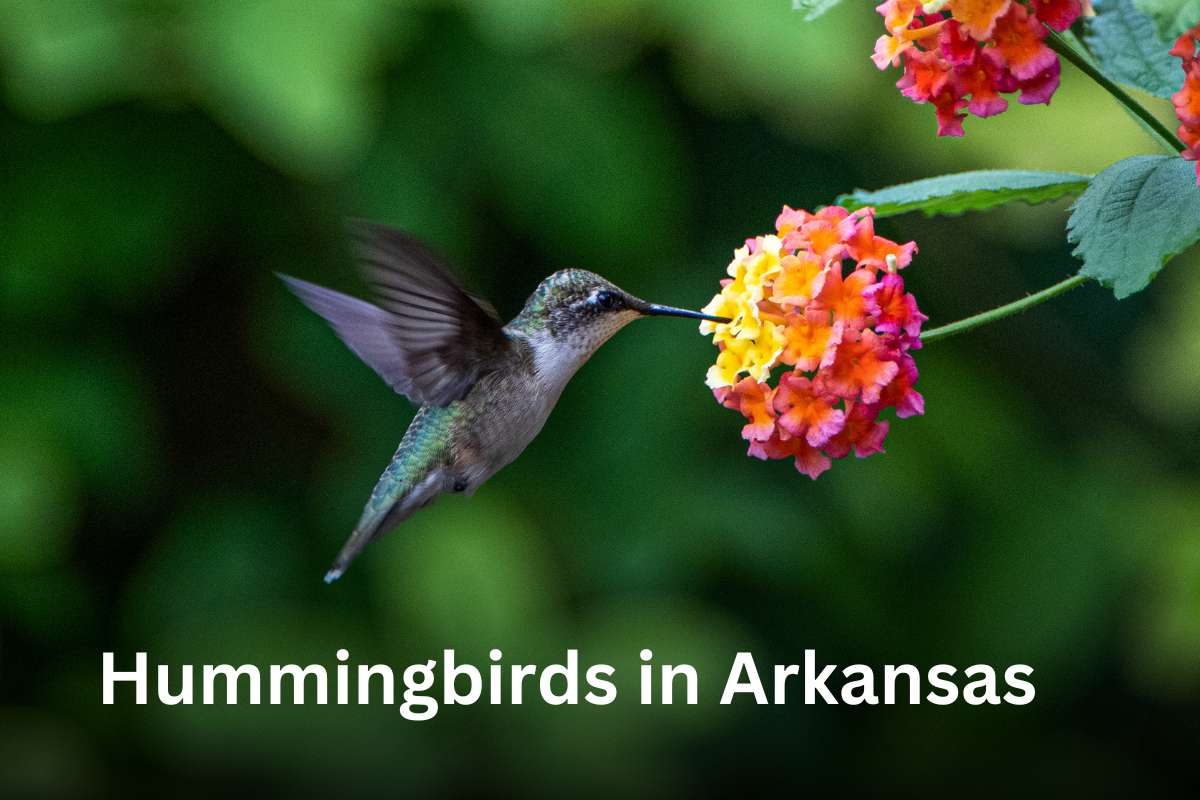
Hummingbirds are a fascinating group of birds known for their ability to hover and fly backward, their vibrant colors, and their incredible migratory journey.
In Arkansas, hummingbirds are a common sight, especially during the warmer months. The state diverse ecosystem, which ranges from mountain regions to lowland plains, provides an ideal habitat for these birds.
These species vary in their frequency of appearance, with some being regular visitors while others are considered rare or accidental.
Today, in this article, we discuss five different hummingbirds in Arkansas. Stay tuned at the end of this article to know these species, habitats, feeding, color, and more.
List of five hummingbirds in Arkansas:
- Black-chinned hummingbird
- Rufous hummingbird
- Broad-tailed hummingbird
- Ruby-throated hummingbird
- Anna’s hummingbird
1. Black-chinned hummingbird (Archilochus alexandri)
The black-chinned hummingbirds are small birds, in the genus Archilochus.
They are metallic green above and white below with green flanks. Also, their bills are long, straight, and very slender.
The males have a velvety black throat with a thin, iridescent purple base. While females have a pale throat. The female’s three outer tail feathers have broad white tips.
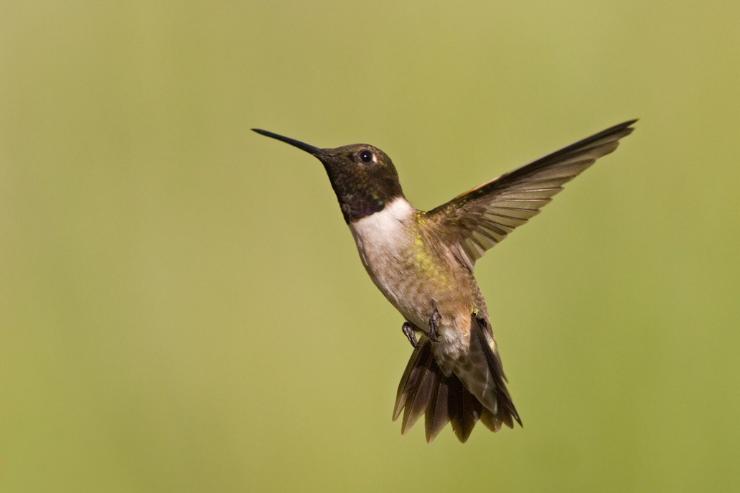
Black-chinned hummingbirds are the same size as ruby-throated hummingbirds.
Size, weight, wingspan, and life span of Black-chinned hummingbird:
- Size: 9 cm (3.5 inches)
- Weight: 2.3-4.9 g (0.1-0.2 oz)
- Wingspan: 11 cm (4.3 inches)
- Life span: 11 years
Habitat: They are found in most of the western United States, reaching north into Canada in Alberta and British Columbia, east to Oklahoma, and as far south as Mexico.
These birds are considered an accidental species in Arkansas. Although, over the past ten years, there have been a couple of sightings around the state, such as in Lonoke and Saline.
It is also found in the mountains, woodlands, orchards, meadows, and chaparral habitats. These species breeding habitat is open, semiarid areas, generally near water.
Feeding: The black-chinned hummingbirds are both herbivores and carnivores. They feed mostly on nectar from flowers using a long extendable tongue.
Occasionally they also consume insects, spiders, and sugar water at feeders.
2. Rufous hummingbird (Selasphorus rufus)
The rufous hummingbird, scientifically known as Selasphorus rufus, is a small bird. Also, it is one of nine species in the genus Selasphorus.
Male rufous hummingbirds glow like coals in good light, with a beautiful iridescent-red throat and a bright orange on the back and belly.
Despite this, females are green above with rufous-washed flanks, rufous patches in the green tail, and frequently a spot of orange in the throat.
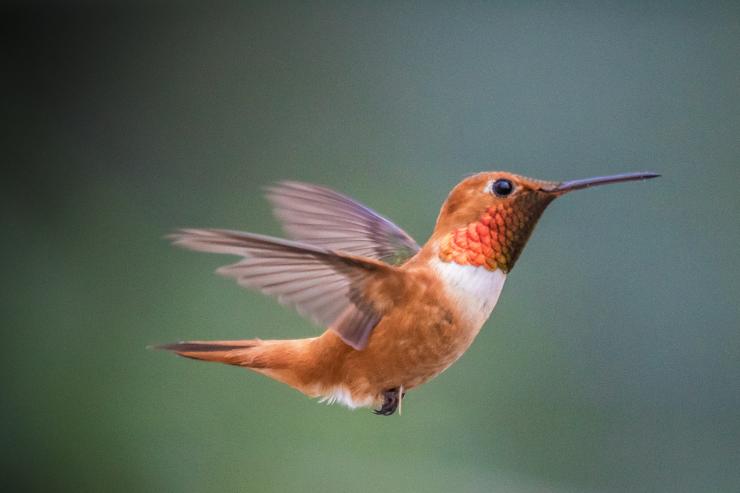
Size, weight, wingspan, and life span of Rufous hummingbird:
- Size: 7-9 cm (2.8-3.5 inches)
- Weight: 2-5 g (0.1-0.2 oz)
- Wingspan: 11 cm (4.3 inches)
- Life span: 3–5 years
Habitat: They are considered near-threatened species but have been spotted in Arkansas during winter.
Rufous hummingbirds have been spotted in the state, usually around Little Rock and Conway, from August to April.
These birds breed in western North America from southern Alaska through British Columbia and the Pacific Northwest to California.
They inhabit open areas, forest edges, mountainsides, oak forests mixed with conifers, woodlands, scrublands, and brushy areas.
Feeding: The primary food source for Rufous hummingbirds is nectar from vibrant flowers. Although, they also consume small insects and spiders.
3. Broad-tailed hummingbird (Selasphorus platycercus)
The broad-tailed hummingbirds are a medium-sized bird. It has a slender body, a big head, and a long straight bill.
Speaking about its color pattern, the Broad-tailed hummingbird is iridescent green above with greenish or buffy flanks and a white chest and line down the belly.
Males have a rose-magenta throat patch. Whereas, females and juveniles have green spots on their throats and cheeks and pale eyering.
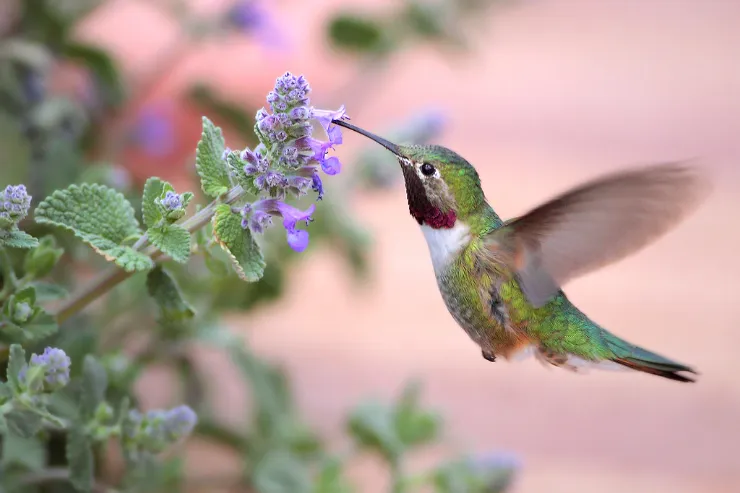
Size, weight, wingspan, and life span of Broad-tailed hummingbird:
- Size: 10 cm (4 inches)
- Weight: 3.6 g (0.13 oz)
- Wingspan: 13.3 cm (5.25 inches)
- Life span: 12 years
Habitat: It is found in highland regions from the western United States and Western Canada to Mexico and Guatemala.
It is also found in Arkansas, but they are very rarely spotted. They live in pine and oak or pinyon-juiper woodland.
These birds breed mainly in subalpine meadows, foothills, montane valleys, and strands of aspen or spruce.
Feeding: The broad-tailed hummingbirds forage mainly on nectar from flowers, sugar water from feeders, and also tiny insects.
4. Ruby-throated hummingbird (Archilochus colubris)
The ruby-throated hummingbird is a species of hummingbird belonging to the family Trochilidae.
These species are a bright emerald or golden-green on the back and crown, with gray-white underparts. Adult males have a brilliant iridescent red throat that looks dark when it is not in good light.
They are the same sizes as a Black-chinned hummingbird. Also, these birds have fairly short wings that do not reach the tail when the bird is sitting.
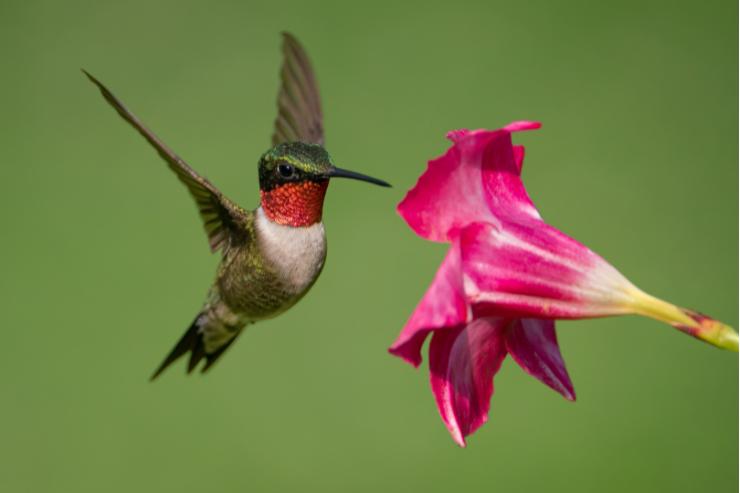
Size, weight, wingspan, and life span of Ruby-throated hummingbird:
- Size: 7-9 cm (2.8-3.5 inches)
- Weight: 2-6 g (0.1-0.2 oz)
- Wingspan: 8-11 cm (3.1-4.3 inches)
- Life span: 3–5 years
Habitat: They are the most common hummingbird in eastern North America, having population estimates of about 35 million in 2021.
Also, these species were seen throughout Arkansas during the spring and summer months, and tend to stay into the early fall. They arrive in April and stay until late September.
They breed throughout most of the Eastern US and south-central and southeastern Canada.
Feeding: The ruby-throated hummingbirds main food is nectar from flowers and flowering trees. Also, they feed on insects, and sometimes sugar-rich tree sap taken from sapsucker wells.
5. Anna’s hummingbird (Calypte anna)
The anna’s hummingbird is a North American species of hummingbird. Also, it is a medium-sized bird.
These species have an iridescent bronze-green back, a pale grey chest and belly, and green flanks. Their bill is long, straight, and slender.
Males have an iridescent crimson-red derived from magenta to a reddish-pink crown and gorget, which can look dull brown or gray without direct sunlight, and a dark, slightly forked tail.
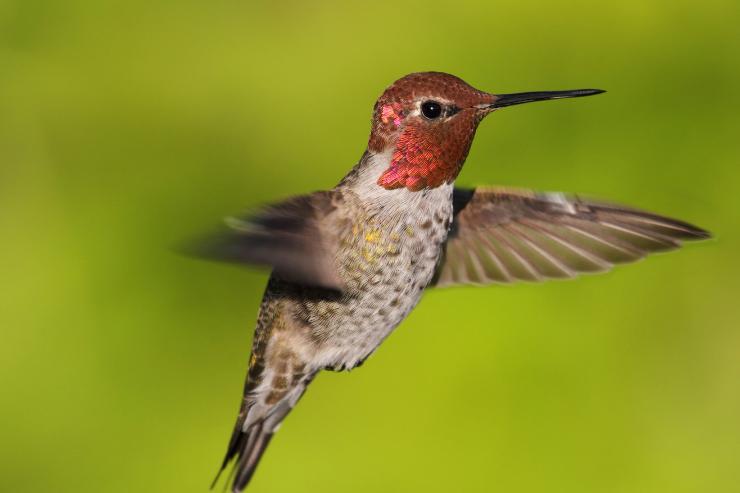
The anna’s hummingbird females also have iridescent red gorgets, though they are usually smaller and less brilliant than the males.
Size, weight, wingspan, and life span of Anna’s hummingbird:
- Size: 10 cm (3.9 inches)
- Weight: 3.6g (0.1-0.2 oz)
- Wingspan: 12 cm(4.7 inches)
- Life span: 8–9 years
Habitat: The anna hummingbirds are very uncommon on the east coast, but they do stray from time to time.
Also, they are incidental species in Arkansas, occasionally spotted during the winter months.
It prefers to breed in open woodland or shrubby areas and mountain meadows along the Pacific coast from British Columbia to Arizona.
Feeding: Their diet consists of tree sap and nectar from flowers. They also eat spiders and small insects.
Conclusion
Hummingbirds are a vibrant part of Arkansas natural biodiversity.
Their presence in the state, from the common Ruby-throated hummingbird to the occasional rare species, offers a captivating spectacle for residents and visitors alike.
Despite their small size, hummingbirds are known for their aggressive behavior. They are fiercely territorial and will often engage in aerial fights to defend their feeding areas.
Remember, always keep your eyes open. You never know when you’ll spot a flash of hummingbirds flying by!






